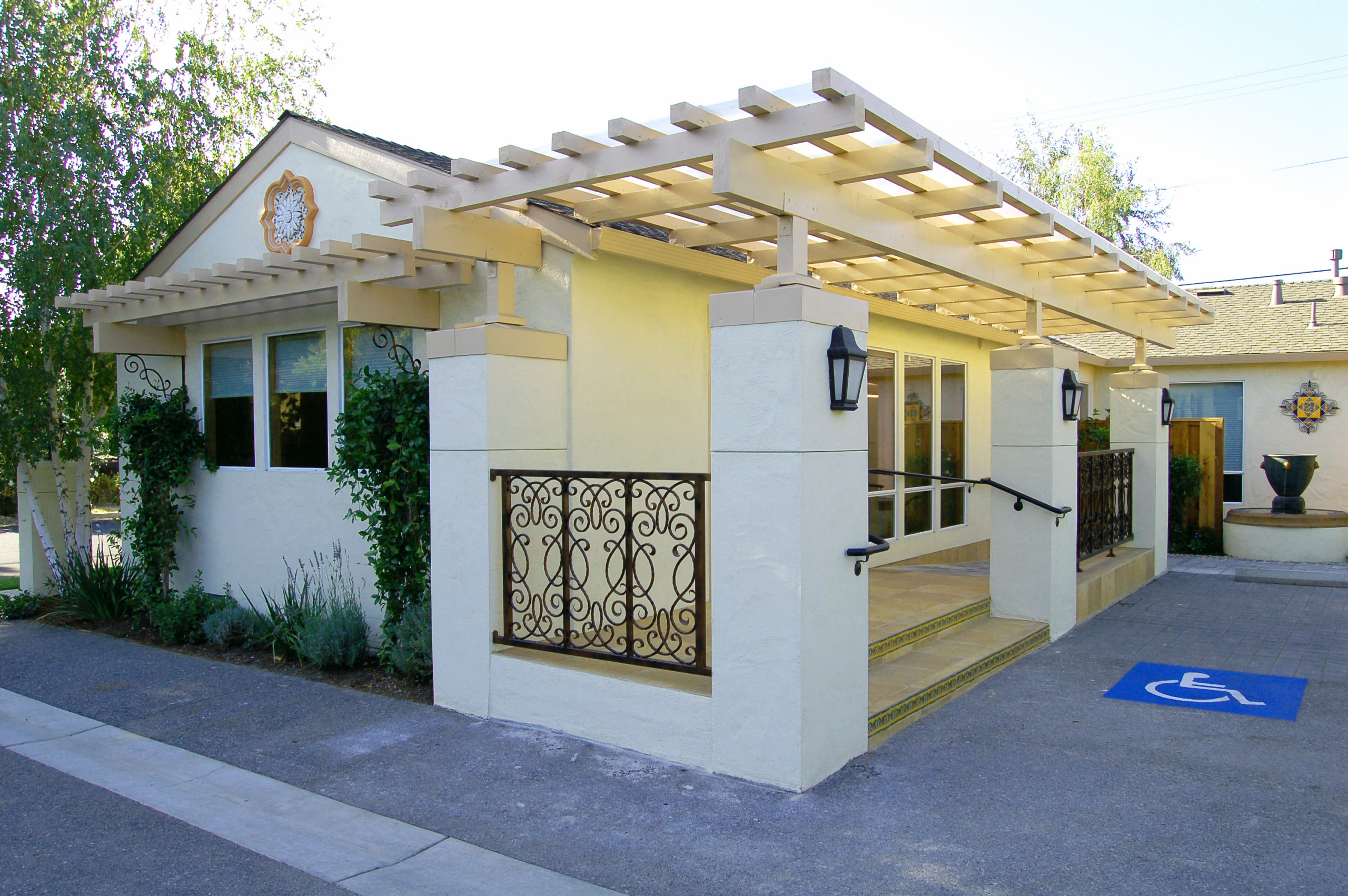

It seems as if I have been beginning all my life: elementary school to high school, to college, to dental school, practice, MBA program, dental design, and now a newsletter. But I am really looking forward to sharing my thoughts with you on a monthly basis because our world and circumstances are dynamic and need frequent updates.
It is my objective that each month you will learn something new and relevant to your project or practice and wealth management and that you will be able to implement the information shared in this newsletter. So, let’s get started!
Congruency
This one-word answer could be the end of this newsletter. While you might be disappointed with the brevity (or very happy as I always appreciate concise answers), it is a comprehensive and highly informative response.
Successful practices almost universally exhibit office environments and designs that are consistent and congruent with the level of care that is proposed to the patient. This applies to general and specialty practices, rural and urban practices, single and multi-doctor practices, and practices in economically depressed and wealthy geographies.
I can state this fact with confidence while citing the evidence of over 3,000 dental offices that we have collectively designed and built over the past 25 years and through many economic upheavals: the 1986 Savings and Loan Crisis, the 1991 recession, the twin disasters of the 1997 Russian sovereign debt default and Long Term Capital Management bankruptcy, the 2000 dot com bubble, 9/11/2001, and the 2008 recession.
So what is meant by the term congruency?
Just this: it is difficult for a patient to emotionally believe that Mayo Clinic’s level of care can be delivered in a broken-down facility. You might be a tremendous diagnostician and surgeon but a poorly presented care environment leads the patient to believe otherwise because they didn’t go to dental school! Patients evaluate what they understand and extrapolate their impressions to the quality of your care. Don’t believe it? Look at the two photos below (fig. 1A and 1b).
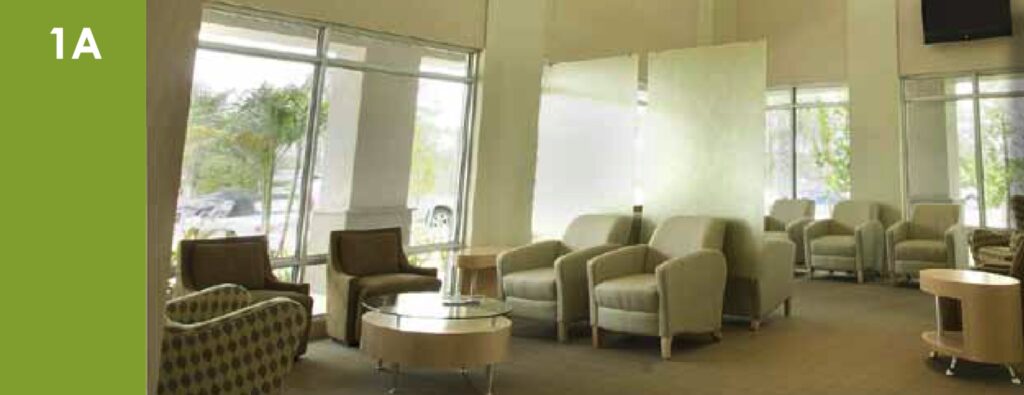
Which office would you rather go to for a heart problem and cardiac care? Not many of us are cardiologists, so how do we determine who treats us? Other than the initial referral, the office environment (design) makes the defining statement of the quality of care to be expected and we base our expectations on those things which we can evaluate: the quality and condition of the furniture, carpet, wall covering, pictures and frames, lighting, etc.

Marketing surveys have been conducted as to how patients assess the quality of healthcare they receive. In these surveys, patients in a number of facilities were asked to rate the quality of care they would expect to receive, based on a scale from one to ten, according to their observations of a particular healthcare facility. The highest rating any facility received was fifty percent.
In other words, patients from a wide spectrum of income levels and facility experiences expected, at best, only mediocre care. Successful practices carefully state the quality of care throughout the office…in the waiting room (fig. 2), the reception area (fig. 3), the appointment area (fig. 4), the consulting room (fig. 5), the patient restroom (fig. 6), the trunk and clinical corridors (fig. 7,8), a Solaris sterilization area by Pelton and Crane (fig. 9), and operatories (fig. 10).
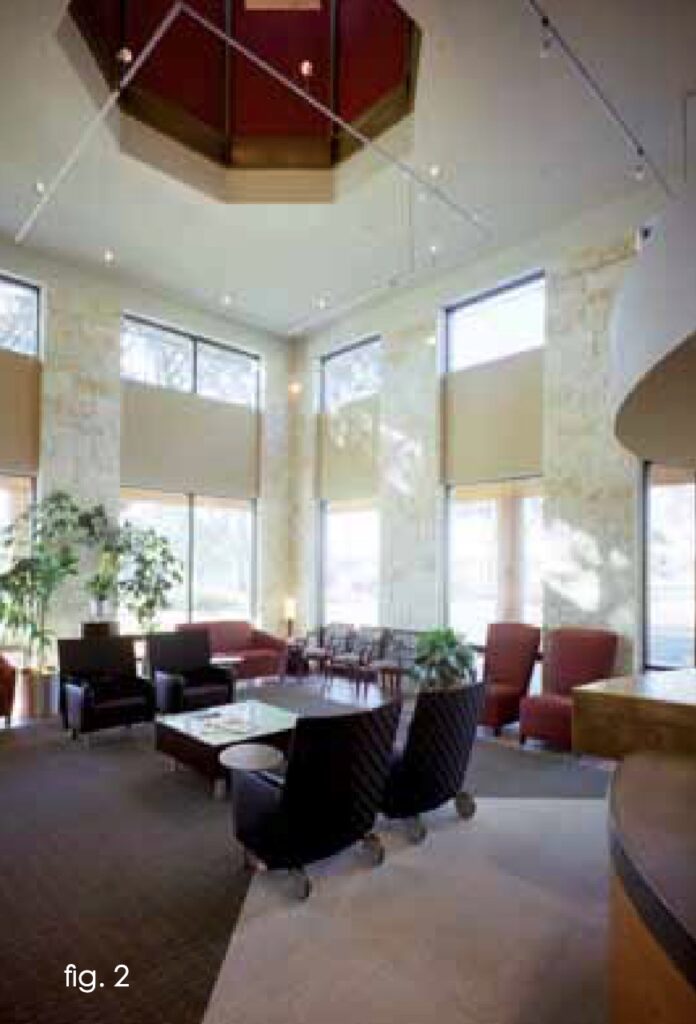
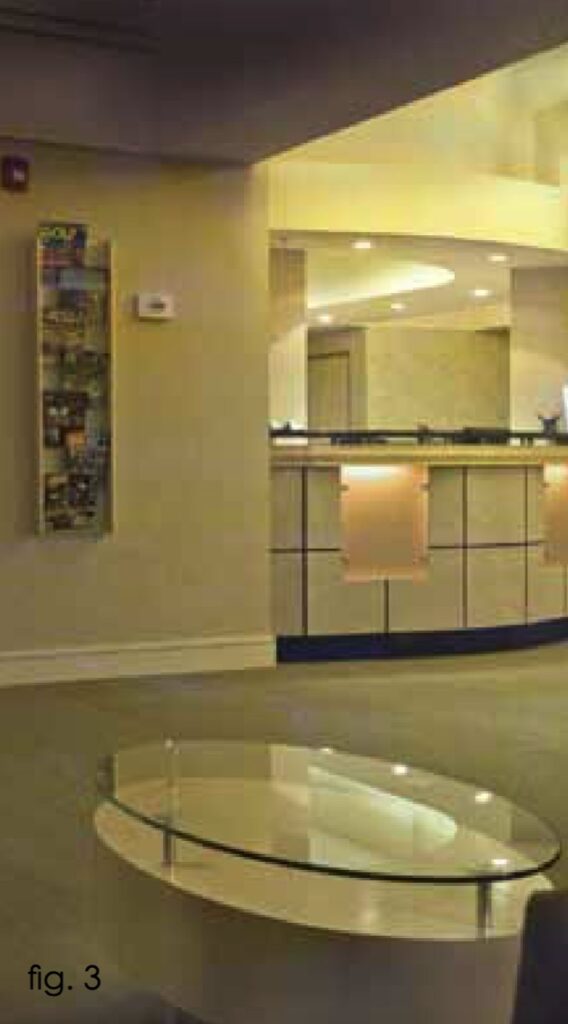
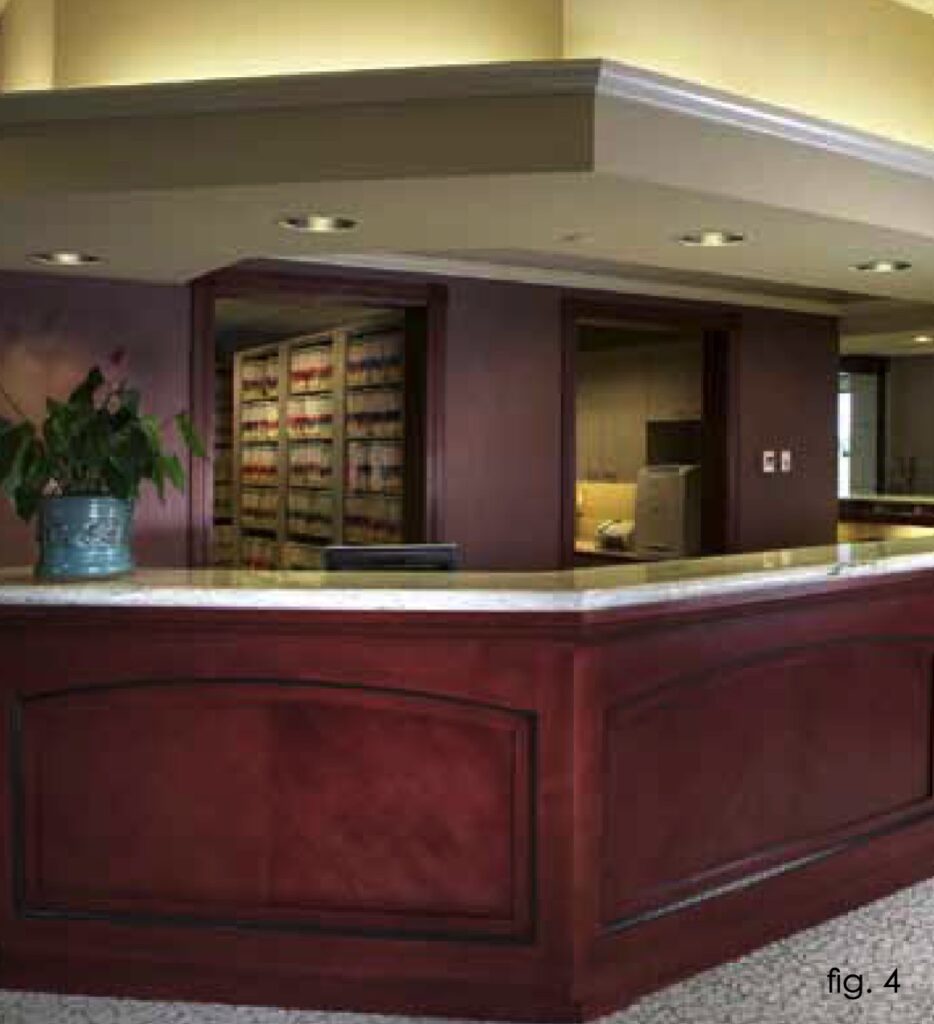
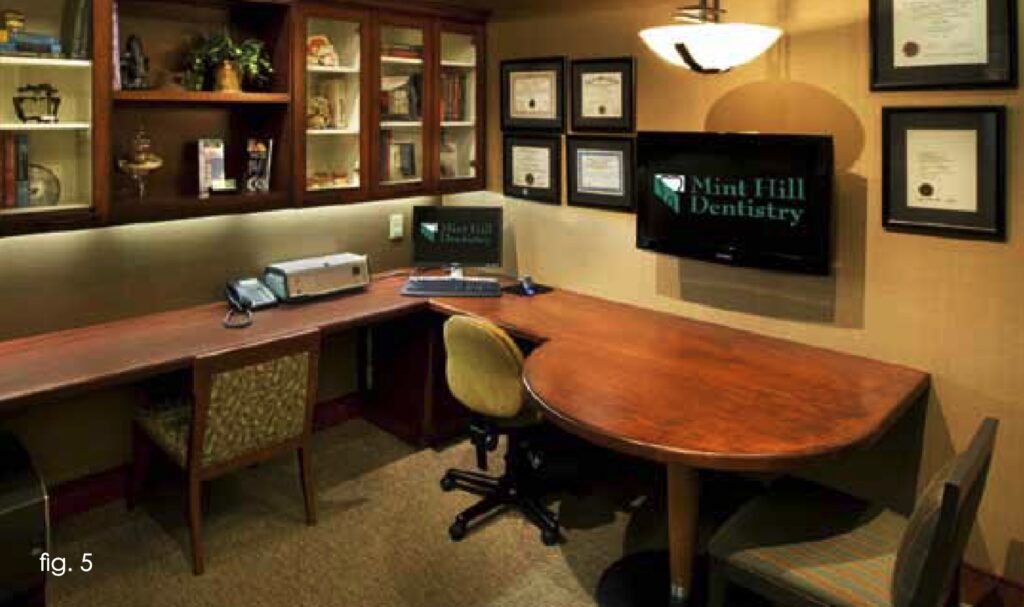
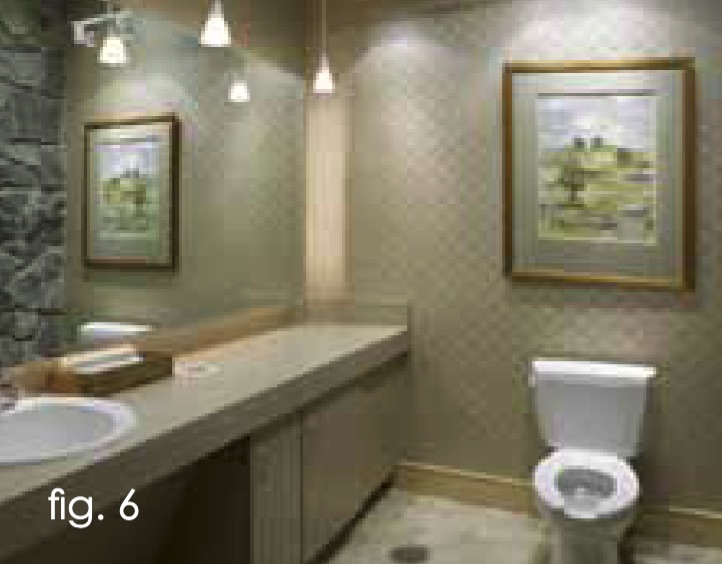

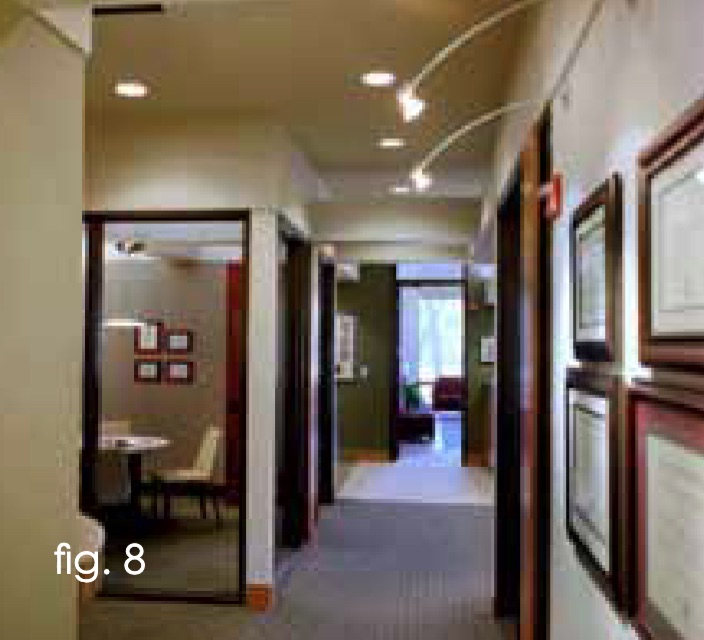
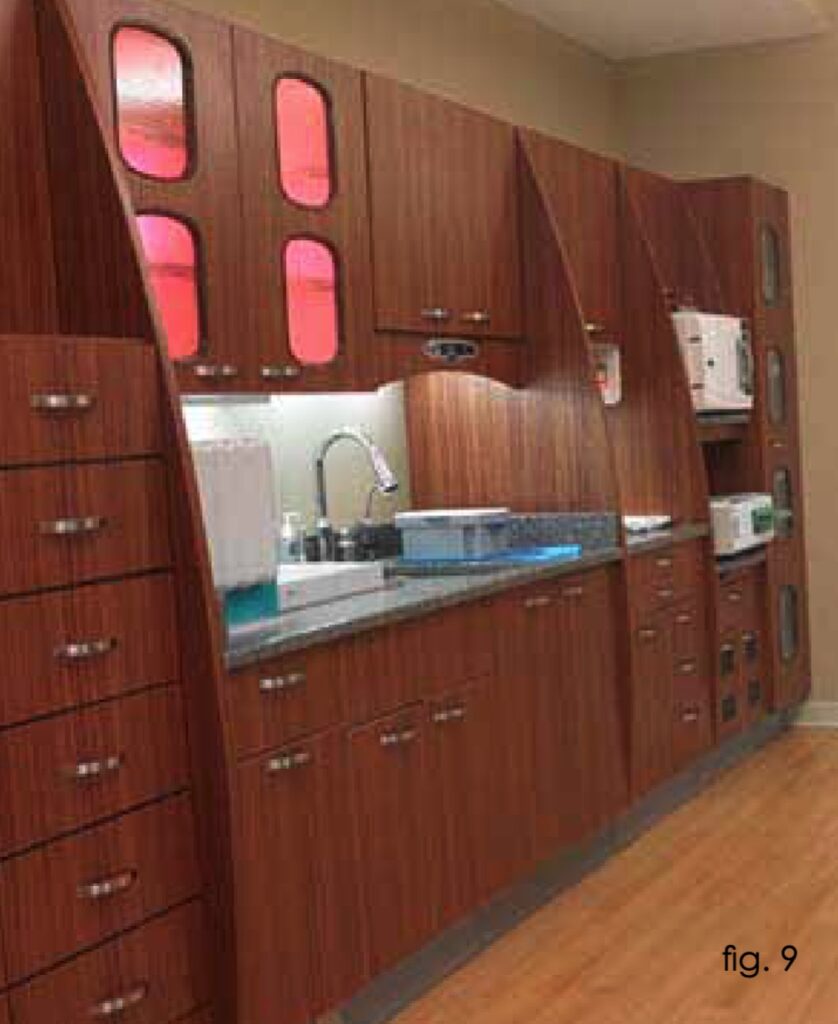
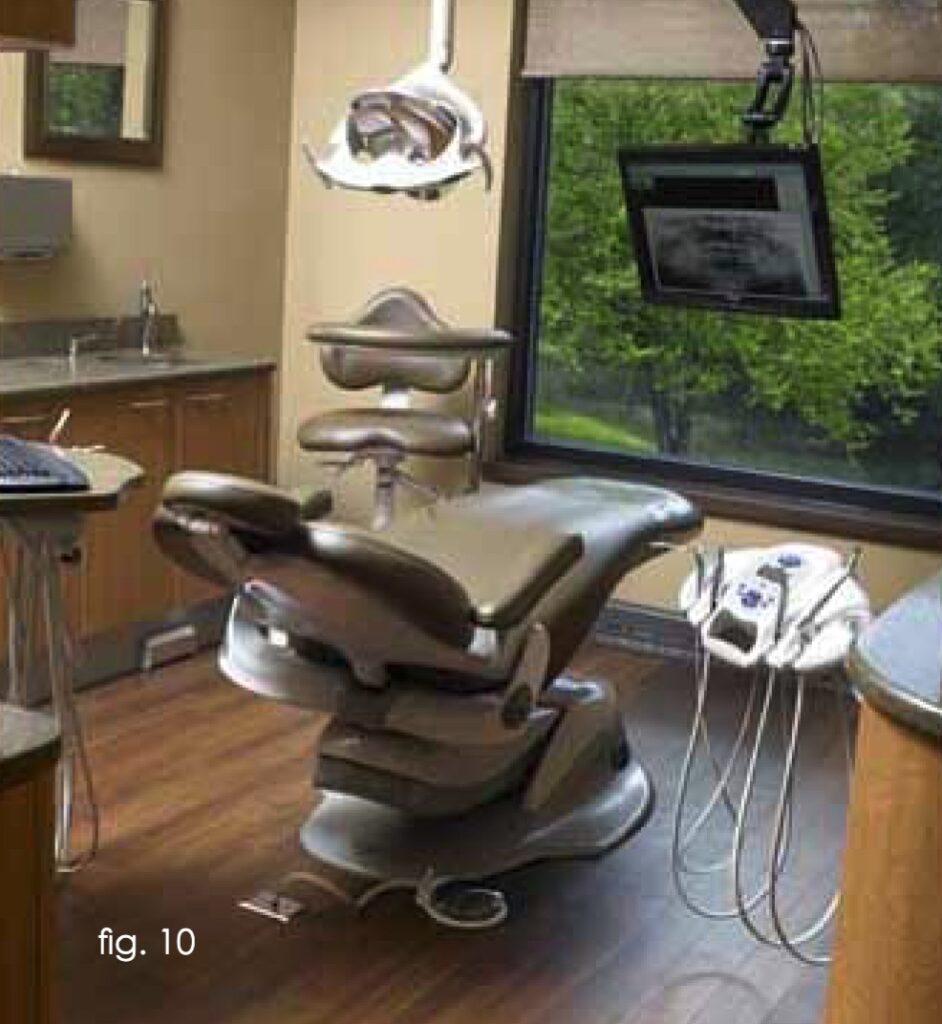
Attempt to answer this question audibly…so you can hear who you are. Now, does your current office environment match your answer? If not, maybe it is time to consider a new office that truly reflects your character and the quality of care you provide.
Some examples of offices that express very different motifs are southwestern, maritime, mountains, Polynesian, and many others (fig. 11). Each of these office environments expresses the character of the doctor but they, more importantly, convey the quality of care provided and set the expectations of the patient.
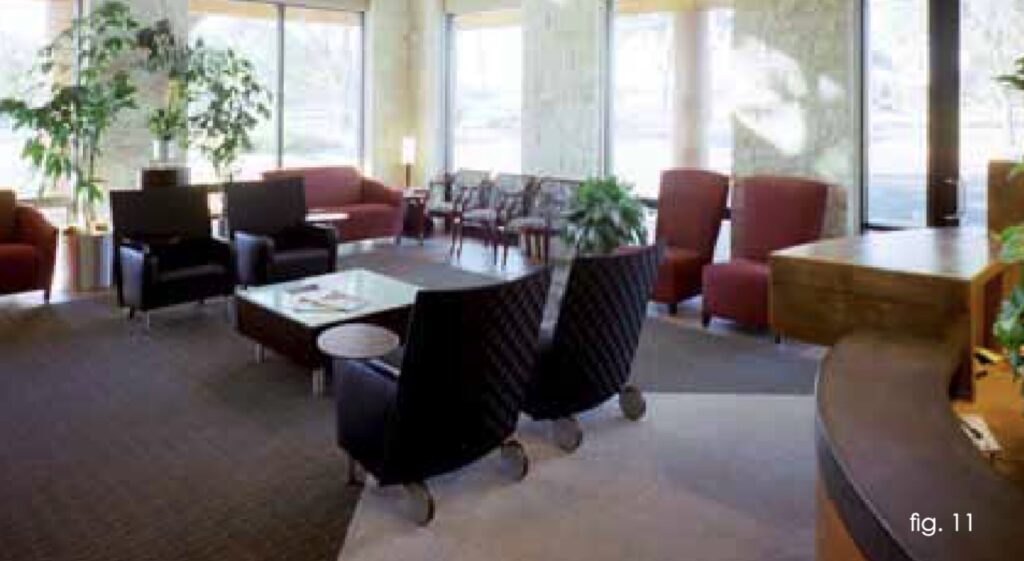
If your office environment is consistent and congruent with the level of care you are proposing to your patients and incorporate a functional floor plan in your office design, expect to experience what thousands of offices have discovered.
So, does your office reflect the level of care you are offering to your patients? Is your office supporting your practice? Therefore, posing the question of whether your practice can support a new office is not the manner in which the project should be approached. Indeed, the question should be whether a new office will support your practice.
The facility must support the practice in order that your life and professional goals to be achieved; it is a vehicle for success. The office must support the growth of the business, the practice, and you as a professional, or it is the wrong design. The office, as the marketing centerpiece, should facilitate the functioning of the practice with a significant increase in productivity.
Nothing is easy. If it were, everyone would be executing a strategy to protect and grow their wealth. But the strategy is simple: buy low and sell high. It is the reasoning that gets us to that point of conviction that is difficult.
Today’s economic environment is nothing if not volatile, and this volatility lends uncertainty to the future and makes the path forward unclear. I spoke with my son, Paul, who has been on Wall Street for years as a financial analyst and his assessment below lends clarity to our collective financial circumstances.
By now it is widely accepted that the economic contraction that began almost five years ago was a result of excessive leverage, that is, individuals and businesses borrowed to make purchases. What is not as widely accepted is that we have clearly entered a deleveraging process in that those same individuals and businesses now have reached and exceeded their borrowing capacity and are paying down their debt. The ineffectiveness of the Fed’s policy is a very clear symptom of the deleveraging that is just barely underway.
So the most important question we can ask ourselves is whether we will experience a deflationary recession or an inflationary recession; the answer will have a profound influence on how we financially maneuver during this period. It is clear to me deflation will rule the day for at least the immediate future (a topic for the following letter) regardless of the amount of money “printed” at the Fed. Think Japan. However, it is essential to remember that deleveraging always ends in currency debasement and inflation.
You are a healthcare provider. You have some modicum of insulation from the manic swings of the macroeconomy. While it is true that unemployment will remain high and businesses will struggle, much of the leverage that exists in the private sector will be shifted to the public sector (this is already happening as anyone with a computer, television, or microfiche knows).
While our country’s enormous debt burden seems untenable, it will shock people how long we’re able to muddle through with this yoke on our backs. Japan’s debt/GDP ratio went from around 50% in the mid-1980s to over 220% today, and I can promise you that people in Japan still regularly obtain dental care.
My objective is not to convince you that dentistry isn’t cyclical; of course, the profession is affected by the general health of the economy. I’m sure you know and appreciate this fact. However, I have two main takeaway conclusions for you: 1) it will be difficult to do well in the capital markets (read ‘stock market’) in the next couple of decades; 2) inflation will become a major issue that must be addressed to preserve wealth.
First, do not depend on market returns to help grow your wealth. Invest in yourself. Invest in your practice. Don’t wait until the uncertainty subsides because it will not. This is a good time to invest in yourself because you still can borrow the money to do it. Not only are you merely able to borrow for your new dental office, but you can do it at historically low rates. And speaking of low rates, labor costs are down 15% compared to three years ago and many materials costs are down…think buy low, sell high.
Second, you are your best inflation hedge and you are your best deflation hedge. Making an investment in an asset that you use and that generates revenue is the best inflation hedge of all because you repay the loan with dollars worth less but you bill in current value dollars. Very few people in the United States have this opportunity. So, carpe diem: seize the day.
Build your skills, improve your practice, and be patient with the markets. We will once again see generational buying opportunities at some point. Let’s just make sure we have some capital when we get there.
As always, I will be in Austin this month working on dental office projects with Fazio Architects. I have worked with Dave Fazio, the principal, for many years and I don’t know of many architects who are as professionally talented and have the ability to listen and appropriately respond to the clients’ wishes in the resultant office design. Just for eye candy, take a look at a sample of the offices his firm has designed over the years at www.fazioarchitects.com.
Dave and his team have designed offices all over North America (U.S. and Canada) for the past 30 years and have won many Dental Economic’s “Dental Office of the Year” awards while at T.H.E. Design and now at his own firm. If you are interested in working with us, send me an email at DrMarkTholen@gmail.com.
Your travel crazy dentist / MBA / designer,
Dr. Mark Tholen
Copyright 2023 © Tholen Healthcare Environments | Privacy Policy